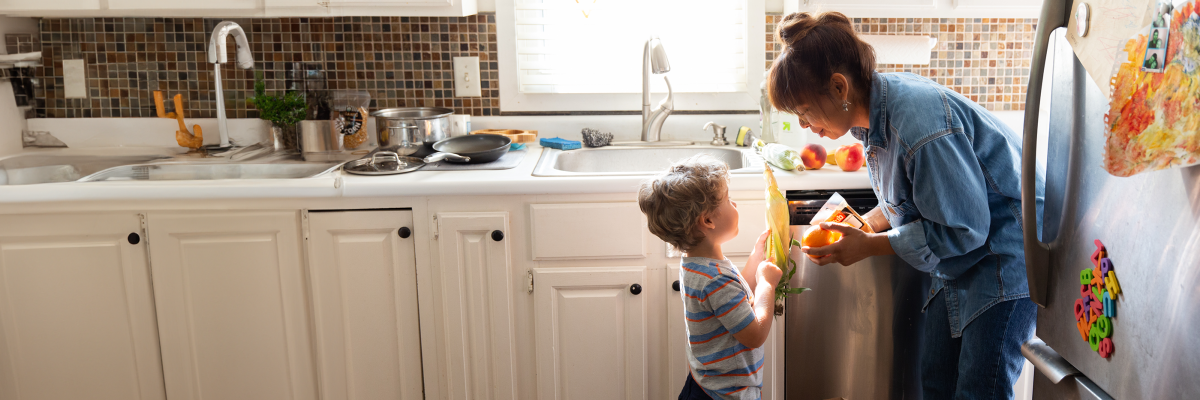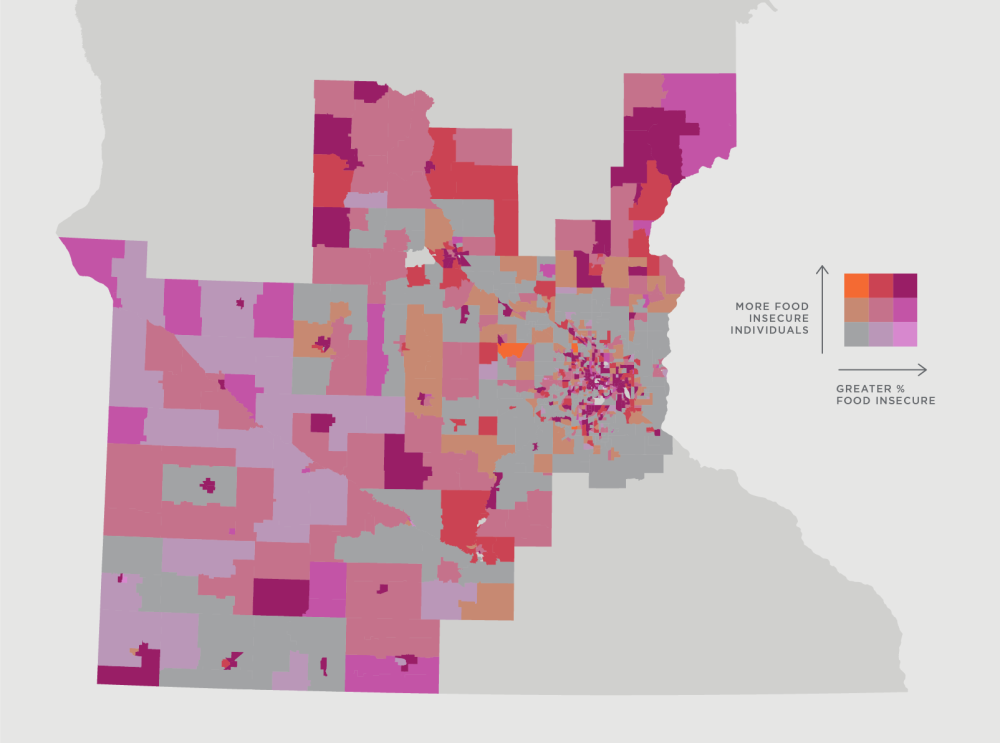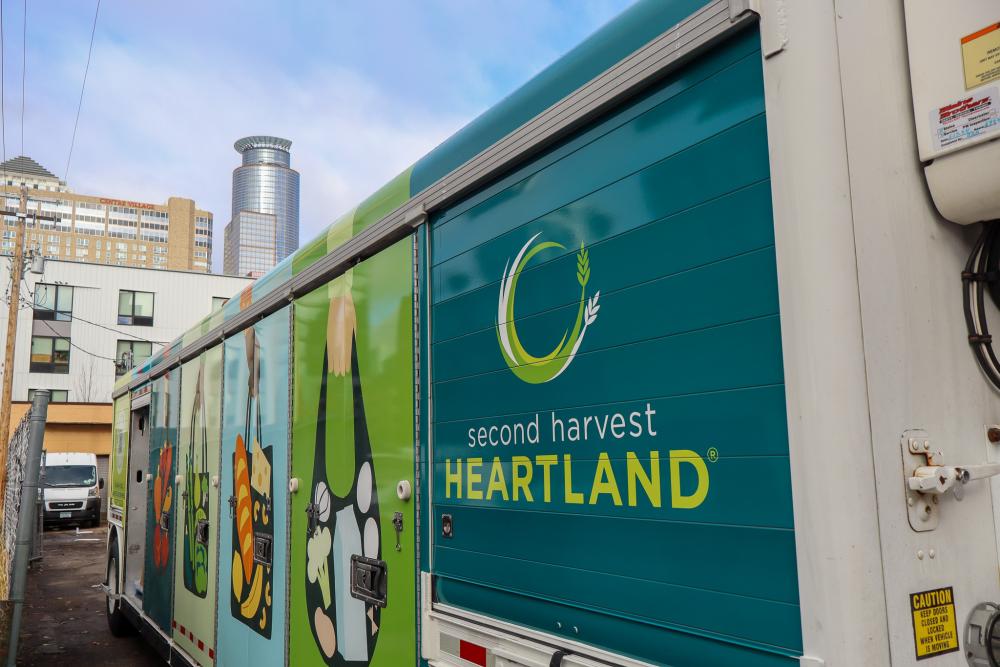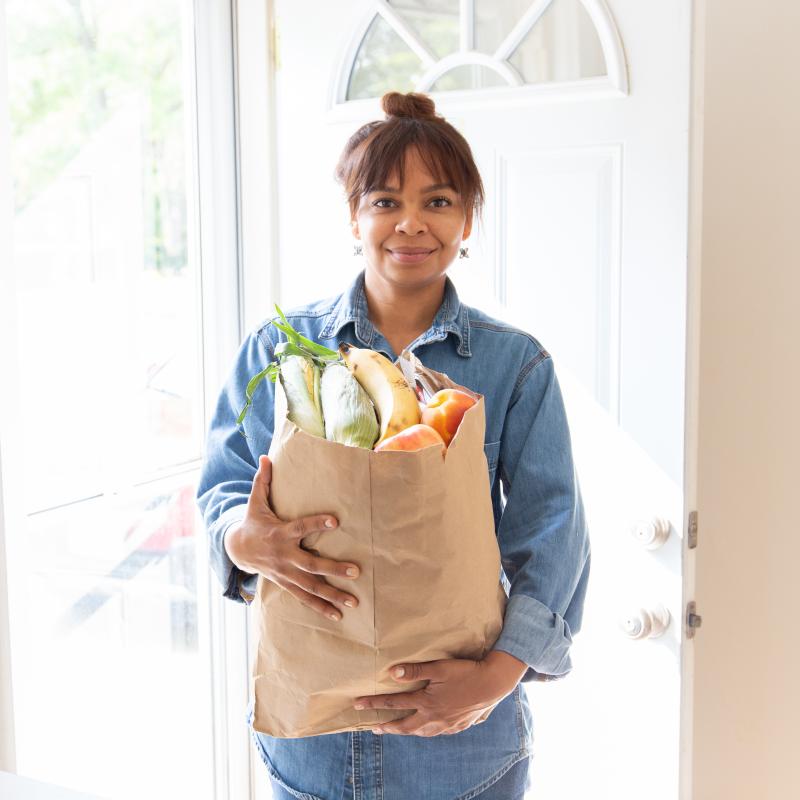
Cutting Hunger in Half by 2030
Make Hunger History
A future where everyone in Minnesota has the food they need to thrive is a goal that belongs to all of us, and it’s going to take all of us to get there.

In January of 2024, Second Harvest Heartland launched Make Hunger History, a bold campaign to cut hunger in half for all Minnesotans by 2030. The core tenets of ending hunger together include reducing hunger today by increasing access to emergency food and preventing hunger tomorrow through policy and partnerships. We will also track our progress to do more of what works and less of what doesn’t.
To help, we partnered with Wilder Research on a high-resolution look at hunger in Minnesota, not only identifying the kinds of support families are using to meet their food needs, but also recognizing where more assistance is needed. The result is the Statewide Hunger Study, which provides valuable data that will support Second Harvest Heartland’s work going forward and hopefully help our fellow food banks across the country inform their own strategies and programmatic decisions.
Mapping Minnesota Hunger

With access to real-time hunger data, Second Harvest Heartland now has the ability to target services to hunger hot spots. By creating maps and meeting with neighbors and partners, we are learning more about our communities, what the food ecosystem looks like, and how we can better serve our neighbors. We will share what we learn so that we can work together to ensure everyone has access to nutritious food, no matter where they live.
In 2025, Second Harvest Heartland will be sharing a Minnesota Hunger Scorecard, including a combination of traditional metrics like county hunger rates and new data that allows us to track food insecurity more accurately and urgently.
Reduce, Prevent, Track
We’re calling on the community to end food insecurity. We’ll reduce hunger today by increasing access to emergency food and prevent hunger tomorrow through policy and partnerships, tracking our shared progress along the way.
Reduce
Reduce hunger today by increasing access to emergency food.
Prevent
Prevent hunger tomorrow with policy, partnerships, and one-on-one services.
Track
Track progress to ensure we're effective and accountable.
Get Involved
Frequently Asked Question about Make Hunger History
Make Hunger History is a big, bold goal to cut hunger in half for all Minnesotans by 2030. We’re bringing the community together to make hunger less common and tracking our progress along the way.
Early in the pandemic, policymakers, business leaders, community leaders and hunger fighters came together to keep devastating levels of hunger at bay. We learned a lot in the process and we’re ready to bring back that sense of urgency and put our new knowledge and partnerships to work.
We considered how long it would take to make significant change if we see action from policymakers, business leaders, and all Minnesotans. We believe it's possible, but we can’t get it done without everyone pooling their varied and integral resources together.
- SUPPORT: Give to Second Harvest Heartland and the hunger relief network.
- ADVOCATE: Lend your voice to legislation and policy that makes hunger less common.
- VOLUNTEER: Turn your free time into meals for the community to make hunger history.
- Make ending hunger a priority: Minnesota experienced the worst two years in recent history when it comes to food insecurity, but this is a solvable problem. Hunger is a policy choice and together we can choose to end it. (Stay tuned for more re: our policy priorities!)
- Visit your local food shelves to hear first-hand the challenges they’re facing and engage with your constituents experiencing food insecurity. They are the experts in what needs to be done. (We can help make those connections!)
- Host hearings, town hall meetings, or other events to bring policymakers and community members together for a conversation about addressing hunger at its roots.
- We want to see food shelf visits going down, as it’s a clear indicator people are better able to afford the groceries they need.
- Our goal for the Make Hunger History initiative is to cut hunger in half by 2030, so that 90% of Minnesota families can afford the food they need.
In 2025, Second Harvest Heartland will be sharing a Minnesota Hunger Scorecard, including a combination of traditional metrics like county hunger rates and new data that allows us to track food insecurity more accurately and urgently.
Minnesota is on pace for our hungriest year on record and we’ve been seeing rates rise since spring 2023 when changes to emergency SNAP benefits went into effect. Alongside inflation and ongoing volatility in gas and grocery prices, this has created an environment where many Minnesotans are having a hard time putting food on the table. According to the 2024 Statewide Hunger Study, 1 in 5 Minnesota households are food insecure and Minnesota’s emergency food system served 18% of the state. 30% of MN households do not feel confident about having enough food to eat a year from now. Hunger is a growing issue in our state, and we need new solutions to make hunger less common for our neighbors.


